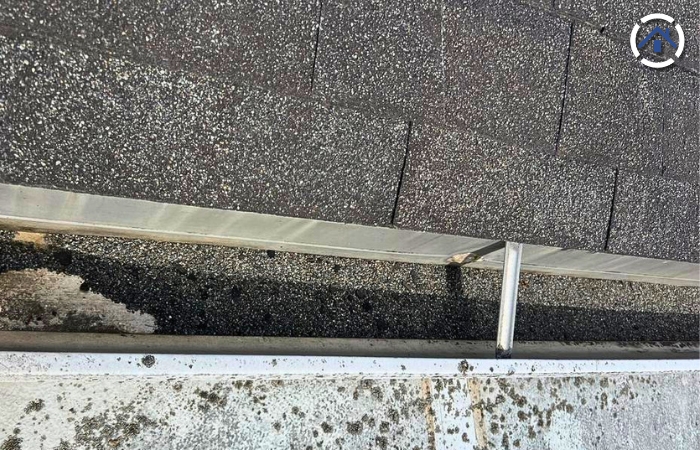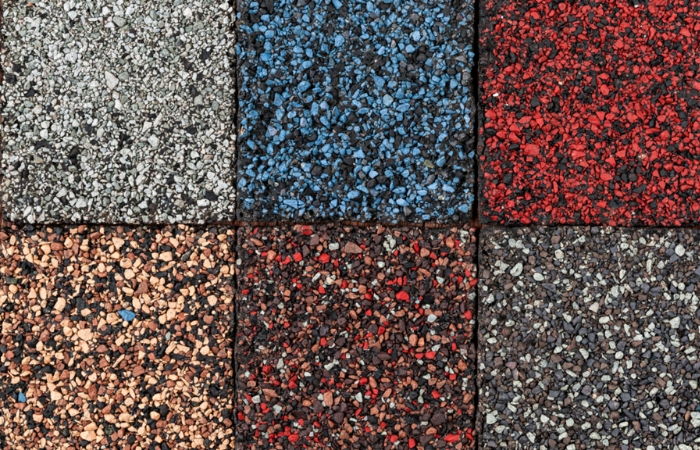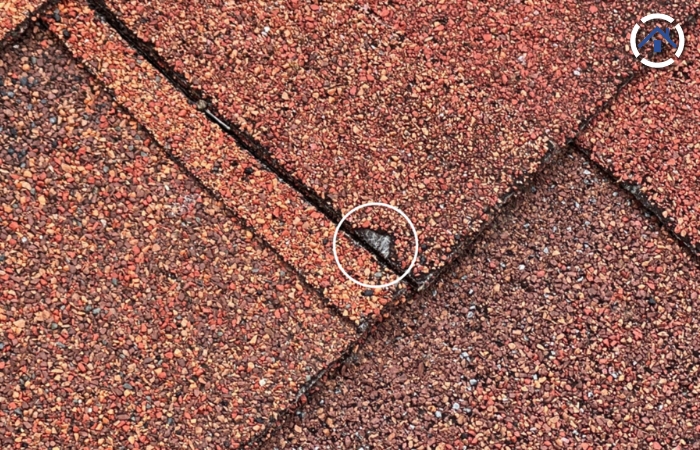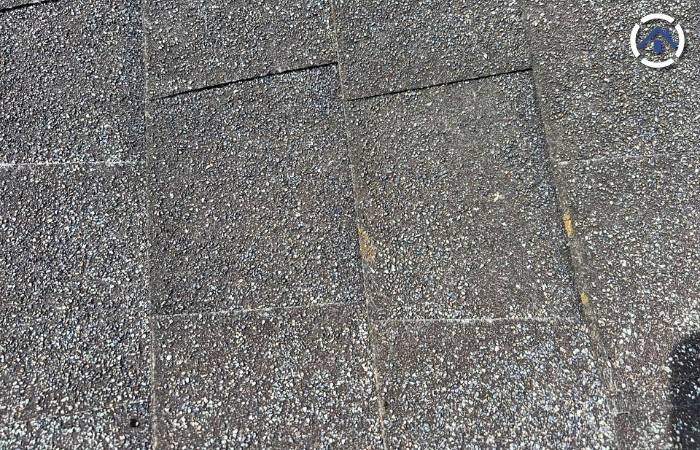
Spotting the warning signs that your asphalt shingle roof needs urgent attention can be a real lifesaver, sparing you both time and money in the long haul. Granule loss is a big red flag that something's not right up there. But what does granule loss look like on your roof? And where should you check to confirm if it's happening? Plus, what might be causing it in the first place?
Understanding these signs and what could be causing them gives you the upper hand in tackling any issues head-on and safeguarding your home from further harm. So, keep an eye out for these signs.

Here's how granule loss might appear on your roof and in your gutters.
1. Missing Granules:
When granules are missing from asphalt shingles, you'll notice patches or areas where the surface of the shingle appears smooth or shiny, indicating the absence of granules. These areas may vary in size from small spots to larger sections of the shingle surface.
Depending on the extent of granule loss, you might observe these patches scattered across the roof or concentrated in specific areas. Additionally, the underlying asphalt layer may be visible in these areas, appearing darker in color compared to the rest of the shingle surface.
2. Exposed Fiberglass Matting:
When fiberglass matting is exposed on asphalt shingles, you'll notice areas where the outer layer of granules has worn away, revealing the woven texture of the fiberglass beneath. These areas may appear lighter or duller in color compared to the rest of the shingle surface, and you might see a grid-like pattern of fibers.
In some cases, the exposed fiberglass matting may appear frayed or rough, especially around the edges where the granules have worn off completely. These exposed areas become more visible over time as the shingles deteriorate further.

3. Lots of Granules in the Gutters:
When there are lots of granules in the gutters, you'll notice an accumulation of small, granular particles mixed with other debris like leaves and twigs. The granules might appear as a layer of colored specks covering the bottom of the gutter or mixed in with the debris. Depending on the severity of granule loss, the gutters may even appear to have a sandy or gritty texture.
Furthermore, you might observe the granules accumulating near downspouts or along the edges of the roof, indicating where water runoff has carried them. This buildup of granules suggests that the asphalt shingles on the roof are deteriorating, shedding their protective coating, and may require inspection or maintenance to address the underlying issue.
Here are the potential consequences of experiencing granule loss on your roof and why it's imperative to address it promptly to avoid further damage:
1. Accelerated Degradation and Roof Vulnerability:
When granules are missing from asphalt shingles, the underlying asphalt layer is exposed to the elements. This can lead to accelerated degradation of the shingles due to increased exposure to UV rays, moisture, and temperature fluctuations. As the asphalt layer deteriorates, the shingles become more susceptible to cracking, curling, and breaking, which compromises their ability to protect the roof effectively.
2. Water Pooling and Seeping
Missing granules create uneven surfaces on the shingles, potentially causing water to pool and seep underneath, leading to leaks and water damage within the structure. Over time, untreated missing granules can result in costly repairs or even premature roof replacement.
3. Risks of Moisture Damage
When granules wear off completely, the fiberglass matting within the shingle becomes exposed. Fiberglass is not inherently waterproof, so its exposure leaves the shingle vulnerable to moisture infiltration. This can lead to water seeping through the shingle layers, saturating the underlying materials, and causing rot, mold, and structural damage to the roof decking and interior spaces.
4. Compromised Roof Performance and Longevity
Exposed fiberglass matting lacks the protective properties of granules, making the shingles more prone to deterioration from UV exposure, thermal expansion and contraction, and mechanical damage such as hail or debris impact. Consequently, the roof's overall performance and longevity are compromised, necessitating timely repairs or replacement to prevent further degradation and safeguard the structural integrity of the building.
5. Risks of Water Damage
The presence of granules in gutters can obstruct proper drainage, impeding the flow of rainwater away from the roof and foundation. This can result in water pooling on the roof surface, overflowing gutters, and water infiltration into the building envelope, causing water damage to the roof, walls, and interior spaces.

Here are a few potential explanations for why your roof is undergoing substantial loss:
1. Age:
As asphalt shingles age, they naturally undergo wear and tear due to exposure to the elements over time. UV radiation from the sun, temperature fluctuations, and weather events such as rain, snow, and hail can all contribute to the gradual degradation of the shingles' protective outer layer. This continuous exposure can cause the granules to gradually wear away, leading to extensive granule loss over the lifespan of the roof.
2. Weather Exposure:
Harsh weather conditions can accelerate the degradation of asphalt shingles and contribute to granule loss. For example, prolonged exposure to intense sunlight can cause the asphalt to become brittle and the granules to loosen and detach from the shingles. Similarly, severe weather events such as heavy rain, strong winds, hailstorms, and freezing temperatures can cause physical damage to the shingles, dislodging granules and causing them to wash away or scatter.
3. Poor Installation:
If the shingles are not installed correctly, they may not adhere properly to the roof surface, making them more susceptible to damage from wind uplift, moisture infiltration, and other environmental factors. Poor installation techniques, such as overdriven nails or inadequate sealing, can prevent the shingles from becoming loose or dislodged, leading to granule loss over time.
4. Manufacturing Defects:
In some cases, granule loss can be attributed to manufacturing defects in the shingles themselves. These defects can include issues such as uneven distribution of granules, inadequate bonding between the granules and asphalt layer, or substandard materials used in the manufacturing process. These defects can cause premature degradation of the shingles and lead to accelerated granule loss, even in relatively new roofs.
Understanding how granule loss affects your roof is crucial for keeping your home safe and sturdy. When you notice areas where granules are missing, it's a sign that something might be wrong with your roof. Acting quickly can help prevent bigger problems, such as your roof deteriorating faster or water leaking into your home, which could cause serious damage.
Getting advice from roofing pros is super helpful in situations like this. They know exactly what to look for and can determine if there are any other issues causing the granule loss. With their help, you can devise a plan to fix the problem and ensure your home stays protected for the long haul. Taking care of your roof now means you can enjoy peace of mind knowing your home is safe and sound.